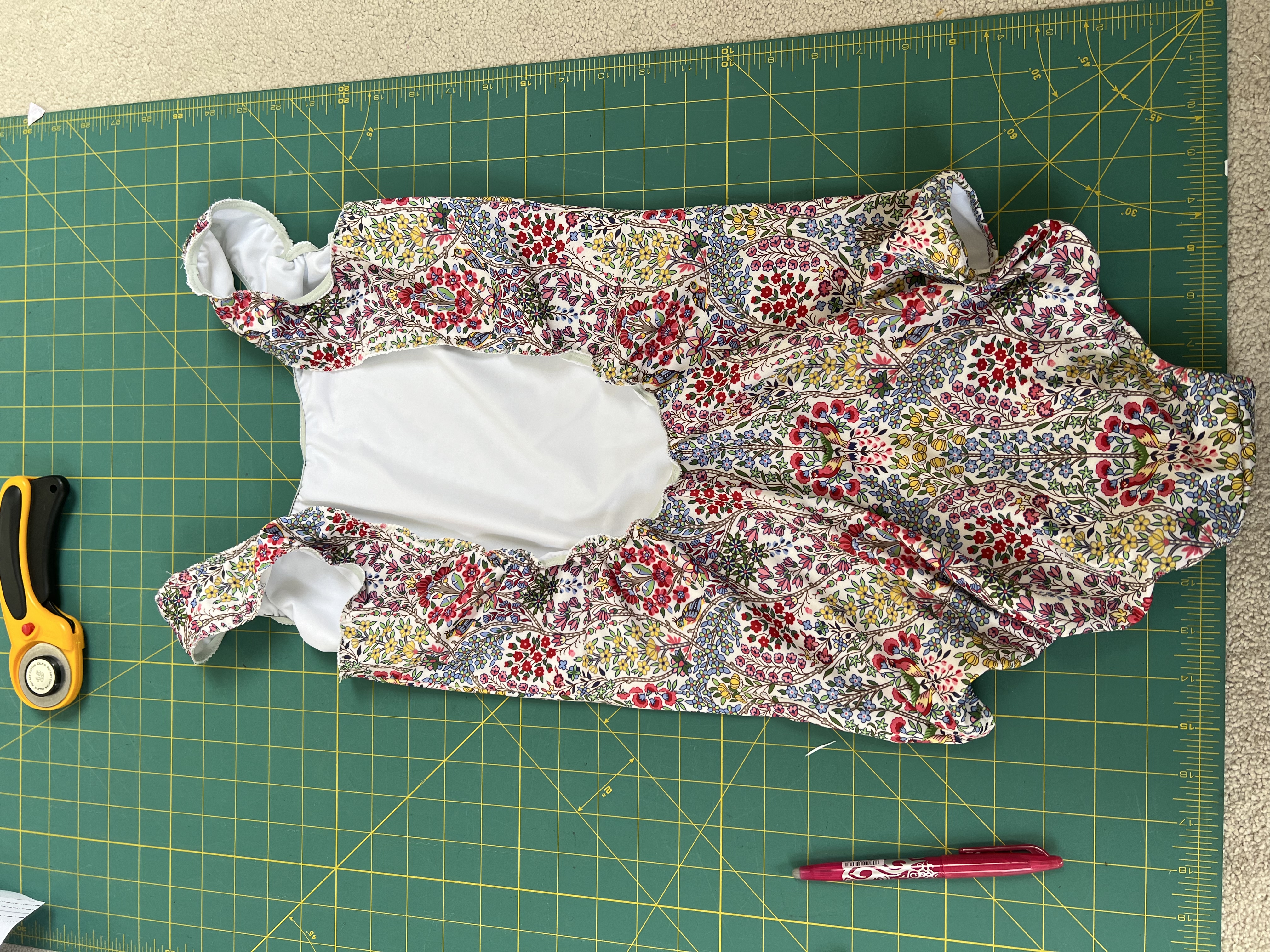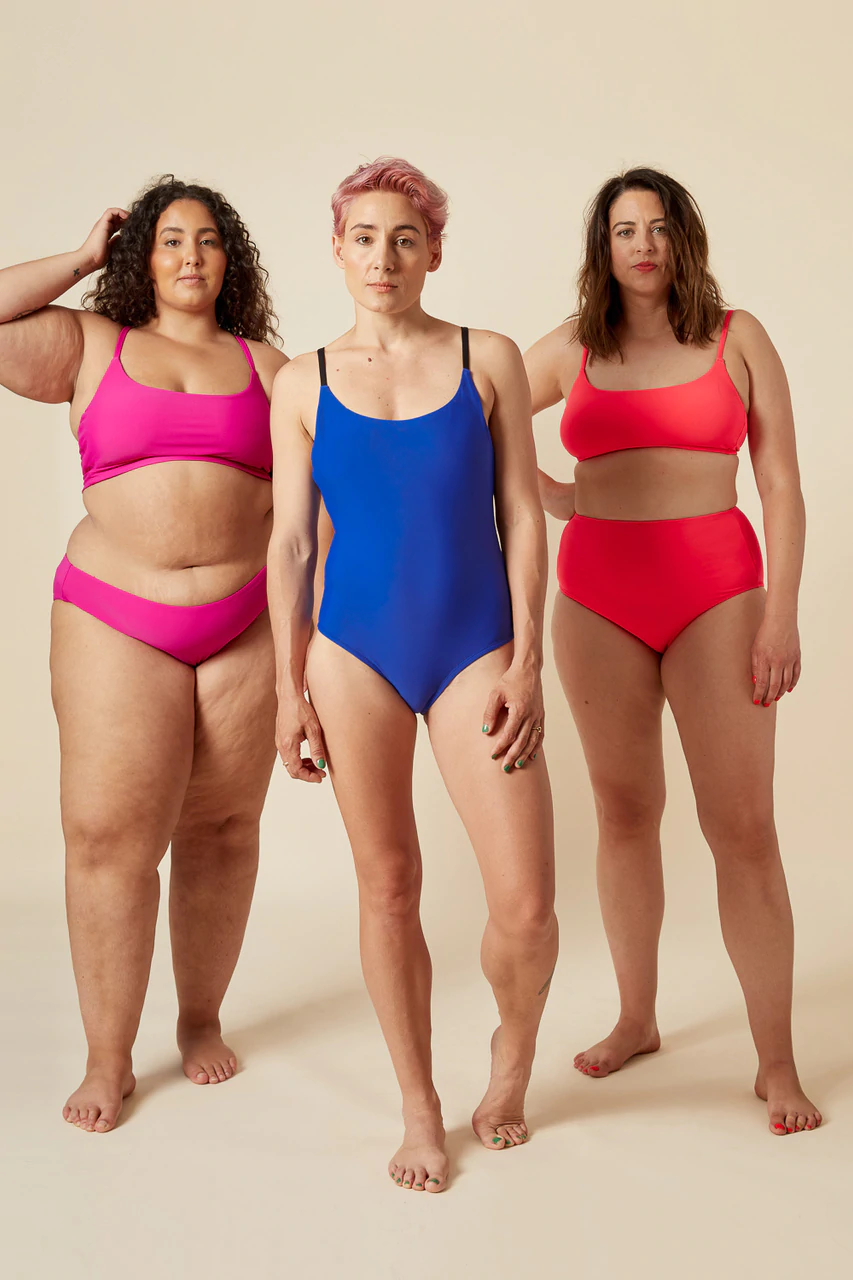Welcome to your April 2023 Dream Wardrobe.
UK SIZES 6-30

With summer just around the corner, now is the time to start planning your summer wardrobe.
If you have never had a go at sewing your own swimwear then you will soon learn how rewarding it can be. Not to mention once you start it can be VERY addictive.
About the fabric:
This beautiful swimwear jersey is Deadstock fabric from Liberty. Liberty currently only produce their swim fabric for manufacture so we are so lucky to be able to get our hands on some of it. The designs is called Kensington Gardens and is so pretty.
I always recommend that you pre-wash your fabric. This fabric can be washed at 30 degrees, I would suggest a low spin cycle.
This fabric is perfect for the Cottesloe swimsuit, however you could use it for any swimwear pattern, leggings or activewear. Why not try mixing it with a plain jersey to make an interesting feature. You have got 1.5m of fabric, so there is enough for a number of ideas.
Here are some other pattern suggestions
Closet Core Patterns Faye Swimsuit
Friday Pattern Company The Seabright Swimmer PDF
How to use up your scraps…
As I mentioned before, this would also work brilliantly as accents or contrast with a plain fabric, this is a great way to use up scraps.
You could also make mini me matching swimwear for any kids in your life.
My daughter made herself some swim toys to play with in the pool by making little balls with the fabric and stuffing them with the scraps.
About the pattern:
Classic one piece swimsuits and mix and match bikini sets. Pattern features athletic elements, four variations and includes detailed instructions to guide the sewer through swimsuit construction techniques.
Sizes 16-30 ONLY
If you have received the Curve pattern you can access the instructions here.
You can also download a digital copy of the Curve files through the Megan Nielsen website using the code DREAMWARDROBECOTT-APR23 at the checkout
Notions required:
- Matching thread (we have sent you a reel of the Gutermann Maraflex thread)
- Elastic, we have sent you this as it can be hard to source swim elastic. If you would like the 20mm swim elastic to make the bikini version, this is available on our website.
- Optional lining, we used a plain liberty swim jersey from our collection .
About your gift:
This month we included the Maraflex thread and the swim elastic, as these extra bits can be hard to find!
#fgdreamwardrobe
Want to share your Dream Wardrobe? Use the hashtag #fgdreamwardrobe and share your unboxing and final makes on social media.
Happy sewing, Josie xxx
Cottesloe swimsuit - Josie's Sewing notes
Prewash fabric
I prewashed the fabric at 30°C.
Lining fabric
I used a plain coloured Liberty swimwear jersey to line this fabric. That way I could ensure that the two fabrics would match each other in terms of stretch.
Choosing a Size
As I am tall, I added 2 cm to the length of the swimsuit at the waist. I also lowered the neckline by 1cm as I have made this swimsuit before and prefer a lower neckline.
It is very hard to toile swimwear as you can really only see the fit when you make it in the fabric you are using for the finished garment. As the stretch and handle can vary so much for swim fabrics.
I suggest getting a favourite swimming costume or underwear and laying it over the pattern pieces to see the cut of the legs, depth of the bust etc.
It is worth trying on your swimsuit before joining the lining and again before top stitching as it is easier to make adjustments at these stages.
I would also recommend tracing your swimwear pattern, then it is much easier to adjust for next time if needed.
Cutting Out
I am a big fan of using a rotary cutter for swimwear, however you could easily use scissors as well. This fabric is lovely to cut, it almost feels like butter!
I had to play around a bit with the pattern placement of this fabric. I wanted to make sure the pattern ran down the centre but also that some of the red flowers shouldn’t hit the crotch area as that may be an unfortunate pattern placement.
Transferring pattern markings
I used a Frixion pen to mark the notches on this pattern. I knew I wouldn’t be using an iron so there was no risk of ironing them out.
Making up the garment
I tested both the overlocker and my standard machine for this swimwear project.
I found that using the overlocker created quite a lot of bulk around the edges since you sew around the edge 3 times in total. I felt there was a lot of thread and it ended up quite thick.
I also found the overlocker occasionally missed stitches, I tried a few different needles, and it didn’t seem to solve this problem.
I then tried the standard machine and had much more luck with this using a lightning stitch and a standard zig zag stitch.
Needle
I used a 70/10 jersey needle.
Thread
I am a huge fan of Maraflex thread for sewing with jersey, especially swimwear as it needs to have lots of stretch. Maraflex has stretch in the thread so it will give when stretched and prevent the thread snapping.
Stitches
For the side, shoulder and crotch seams I used my machine's lightning or stretch stitch, Width 1 Length 2.5.
This ensures you have enough give on the side seams without making them wavy.
As I mentioned you are going to be sewing around all the edges 3 times. I would highly recommend testing each of these stages on a test piece before sewing round your garment.
- To attach the lining to the main fabric I used the zigzag stitch Width 3 Length 4 and went over edges of both fabrics to secure them together.
- To attach the elastic I sewed down the centre of the elastic making sure it was lying just inside the zig zag stitch of the previous step.
- The final step is to turn the elastic to the inside of the garment and top stitch all around. I used the same zig zag stitch and this time I sewed close to the edge of the turned over fabric. This means that all of the elastic in trapped inside giving a smoother, neater finish.
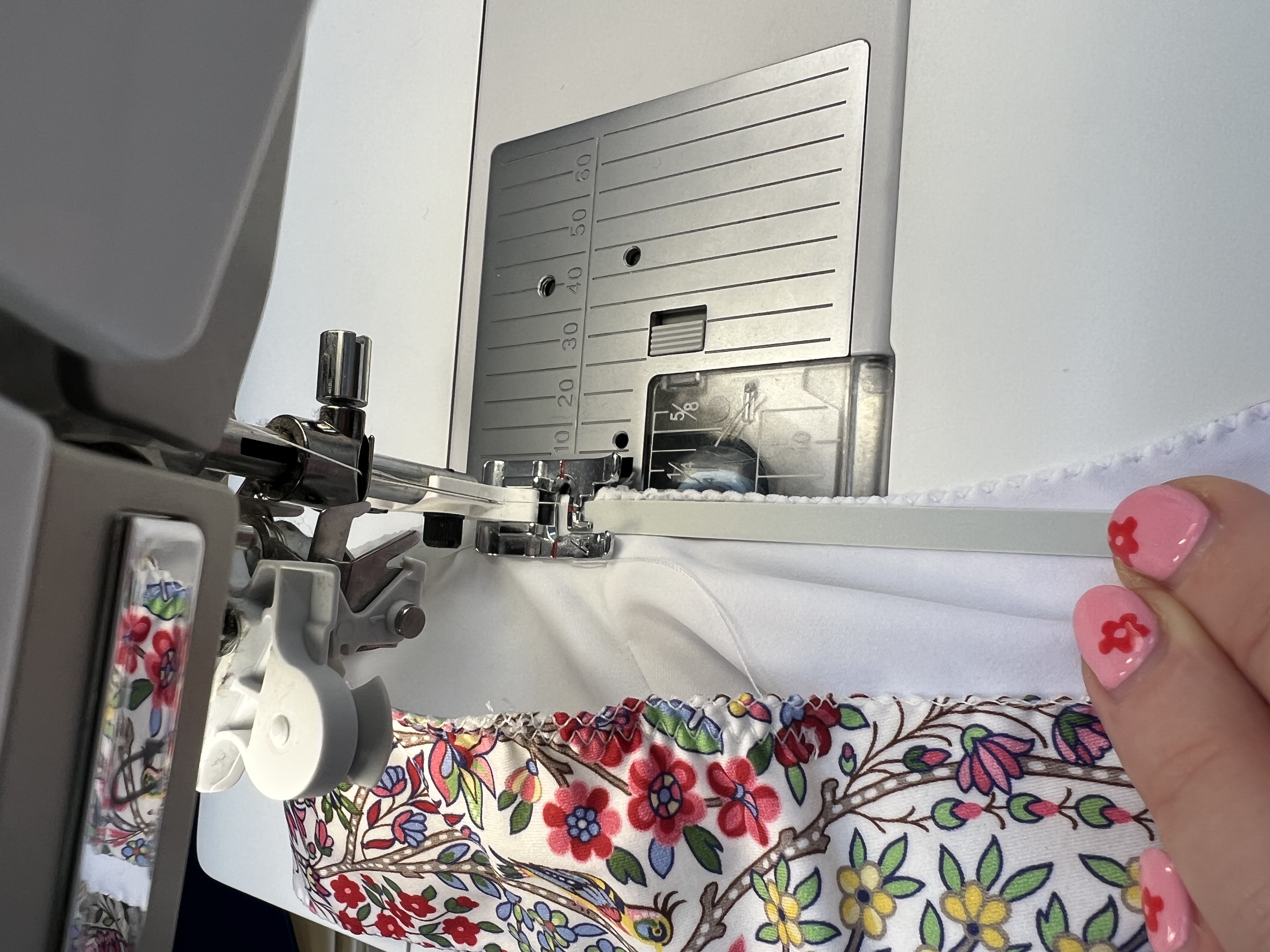
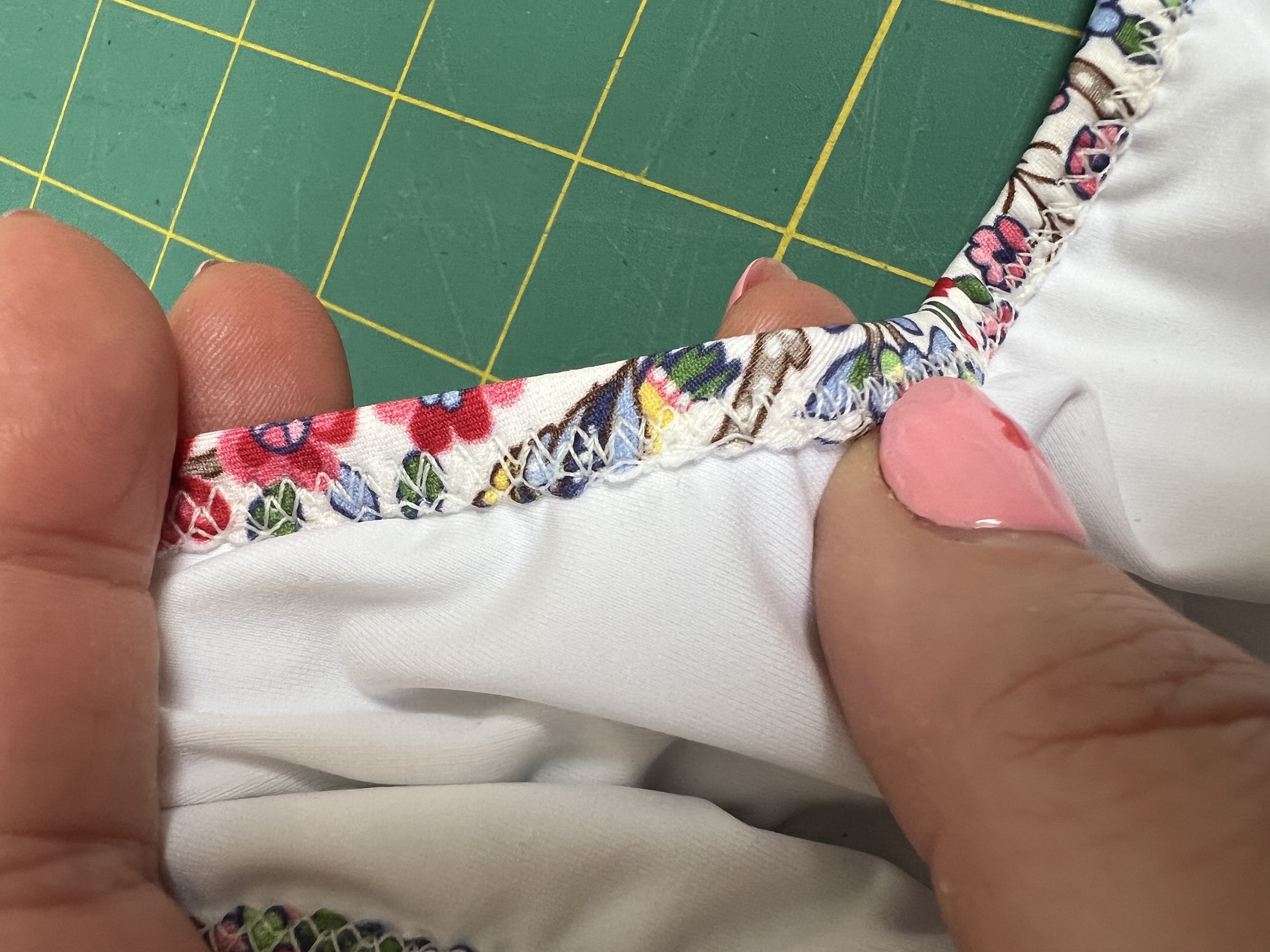
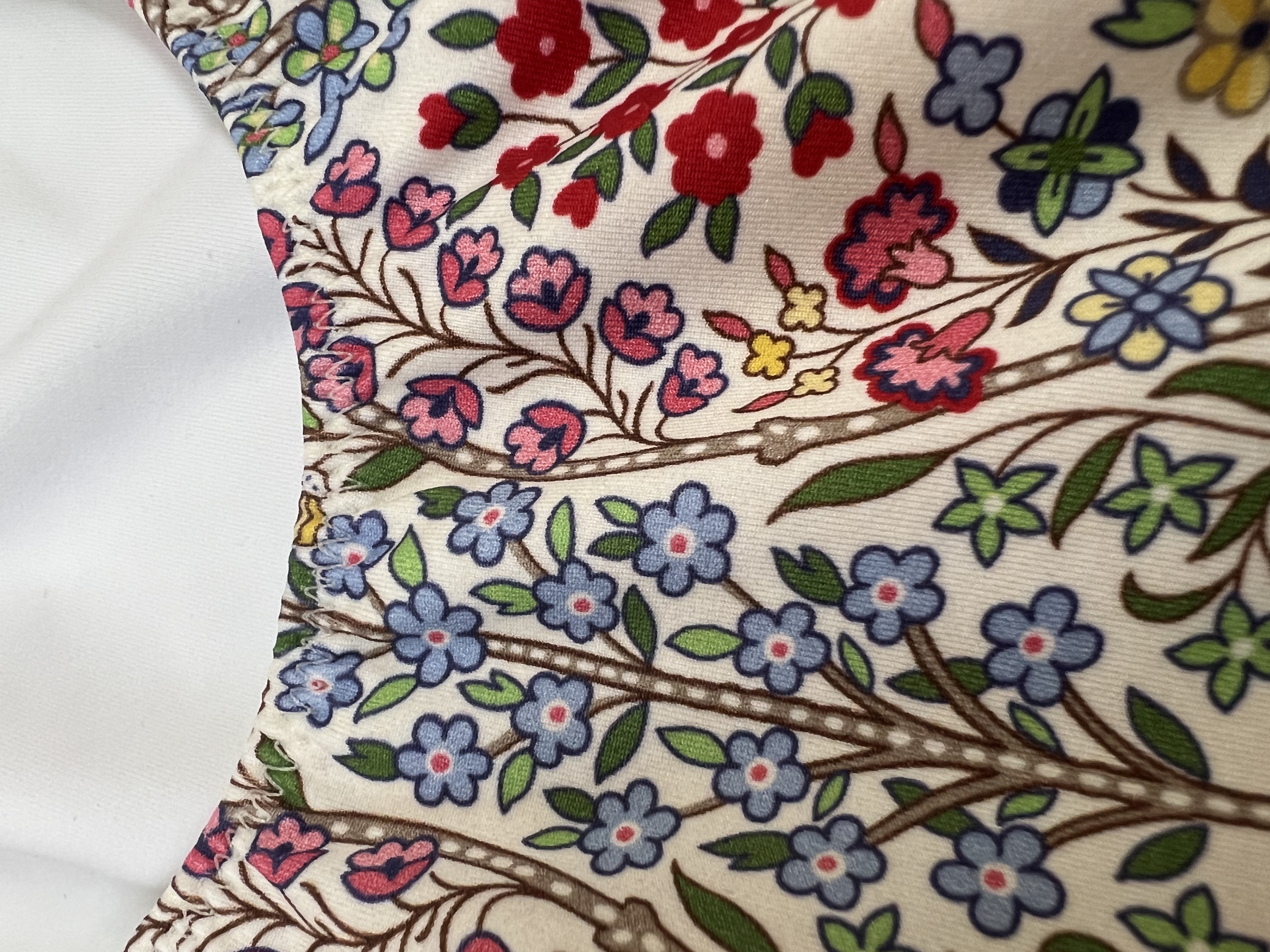
Elastic
My preference is for rubber swim elastic rather than the cotton one. I think it gives a smoother finish. But feel free to play around with different elastic to see which you prefer.
Always make sure you use swim elastic as standard elastic will vey quickly deteriorate in chlorine.
I made the low back version and chose to leave out the bow. I had seen several versions of this online where the swimsuit gaped at the backsides and at the front arm holes. To stop this happening, you need to stretch the elastic quite a bit as you insert it.
I suggest stretching the elastic around 10-20% in areas where it doesn’t gape and as much as 50-60% in the areas where it may gape, particularly around the bottom of the back and the front of the arm holes. You may also prefer a more snug fit around the bottom to feel more secure in your swimwear.
You will find that this technique of stretching the elastic may not make the swimsuit look as pretty off the body as it will contract it, but once you put it on it will fit much better.
